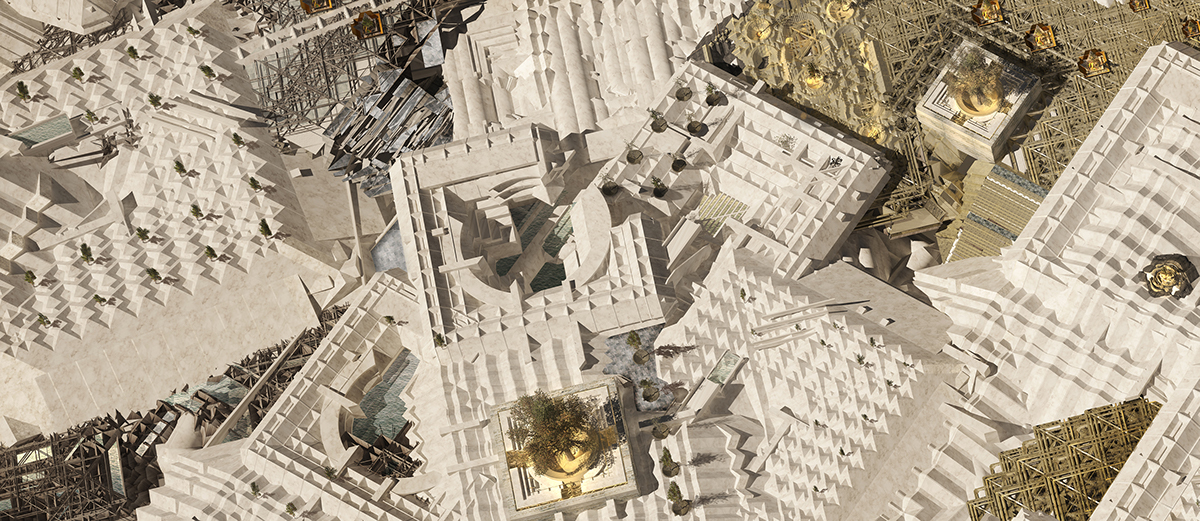
It is estimated that by 2040 affiliations to the Anglican Church in Britain will be less than 1 percent of the population.
Long before that stage is reached, the church will cease to be a viable entity, both in terms of the community and its architecture.
A new, contemporary type of cubistic iconoclasm has been developed to accommodate for the discourse between the fallen religious doctrines
and nostalgia for ecclesiastical beauty.
During an intellectual revolution instigated by Einstein’s theories of special and general relativity, within the world of art it was cubism that set out to wage war with existing order, where artists were concerned with establishing a geometric foundation appropriate for an inquiry into the creative process of nature’s structure. The project focused on engaging a new form of 3-dimensional cubistic transformation, with existing ecclesiastical architecture of the City of London.
St Mary-Le-Bow Church has been chosen as a case study for these deconstructive/constructive processes, and to bring its previous spiritual significance
to the contemporary public life I propose its transformed version to house new Headquarters and Library for The British Humanist Association,
a building which would engage people with the wonder of science and critical reasoning.
The Library gives a unique perspective in time, developed simultaneously with the growth of a centerpiece White Oak Tree, it is a monument to public space, where structural ecclesiastical elements are casted ghosts of the Christian past, and the ornament undergoes cubistic iconoclasm.
Long before that stage is reached, the church will cease to be a viable entity, both in terms of the community and its architecture.
A new, contemporary type of cubistic iconoclasm has been developed to accommodate for the discourse between the fallen religious doctrines
and nostalgia for ecclesiastical beauty.
During an intellectual revolution instigated by Einstein’s theories of special and general relativity, within the world of art it was cubism that set out to wage war with existing order, where artists were concerned with establishing a geometric foundation appropriate for an inquiry into the creative process of nature’s structure. The project focused on engaging a new form of 3-dimensional cubistic transformation, with existing ecclesiastical architecture of the City of London.
St Mary-Le-Bow Church has been chosen as a case study for these deconstructive/constructive processes, and to bring its previous spiritual significance
to the contemporary public life I propose its transformed version to house new Headquarters and Library for The British Humanist Association,
a building which would engage people with the wonder of science and critical reasoning.
The Library gives a unique perspective in time, developed simultaneously with the growth of a centerpiece White Oak Tree, it is a monument to public space, where structural ecclesiastical elements are casted ghosts of the Christian past, and the ornament undergoes cubistic iconoclasm.

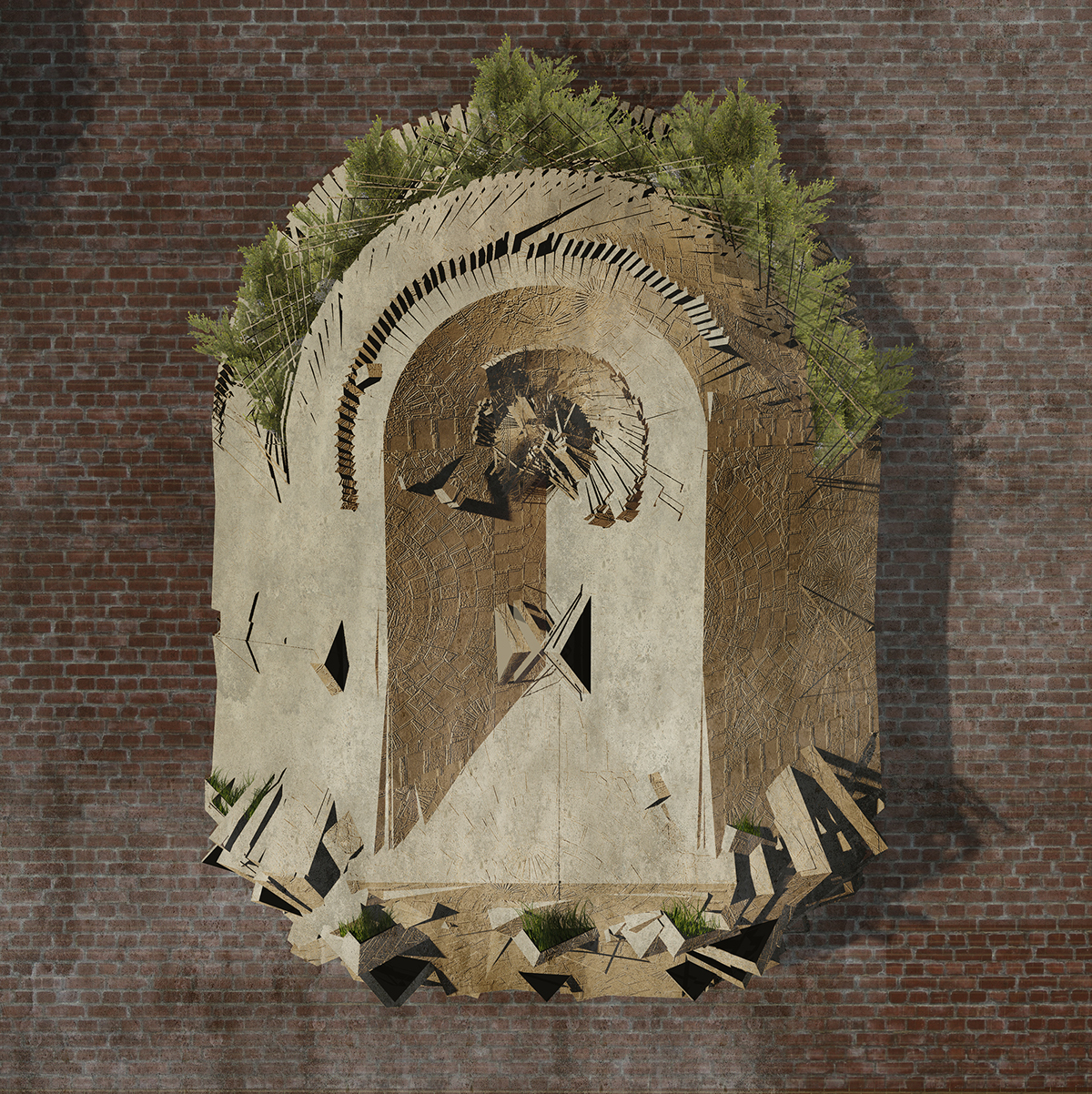



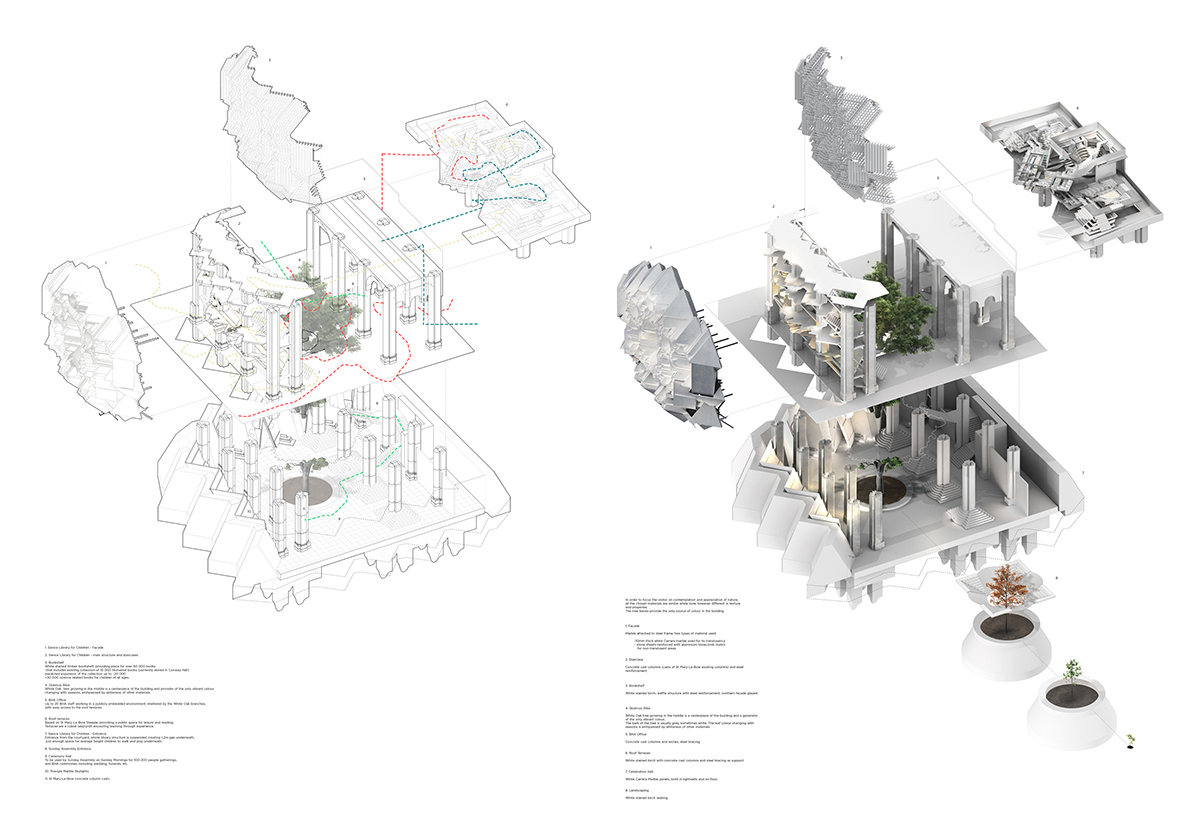
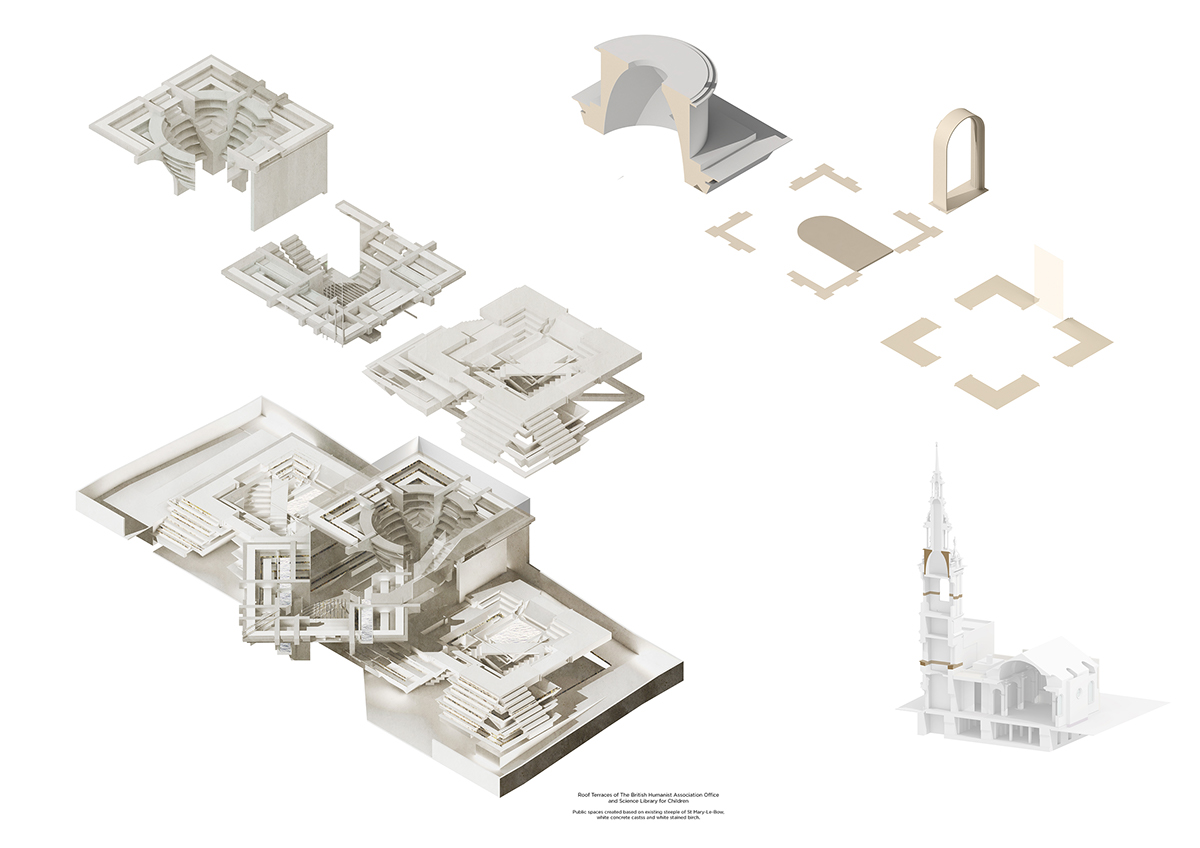
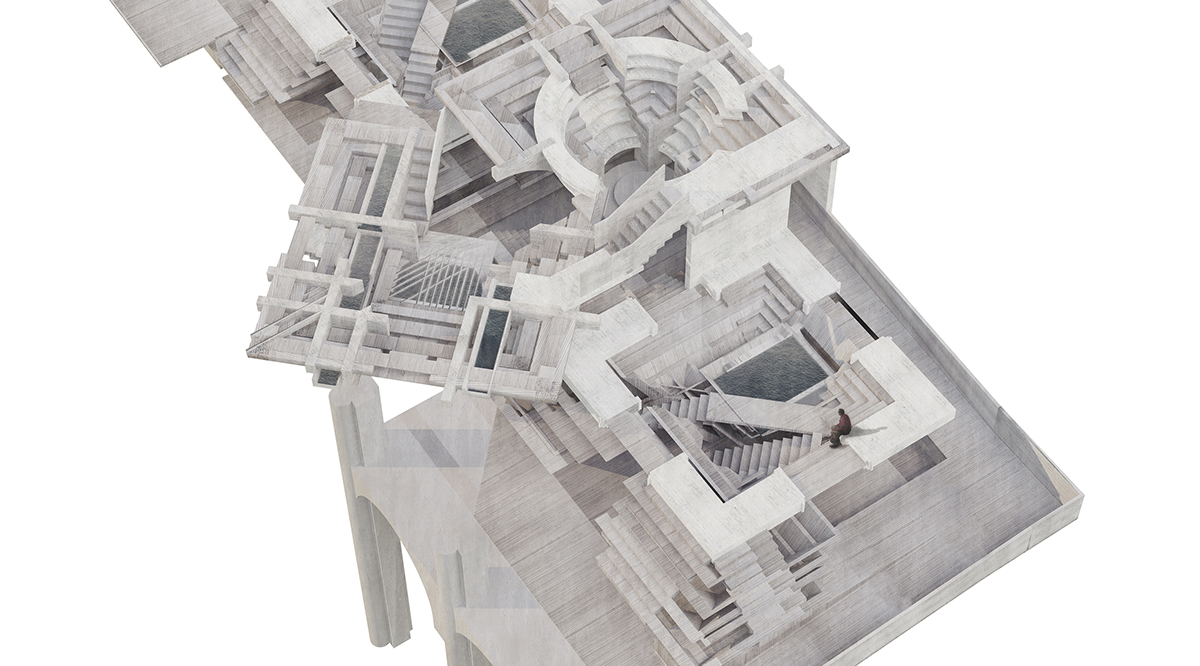


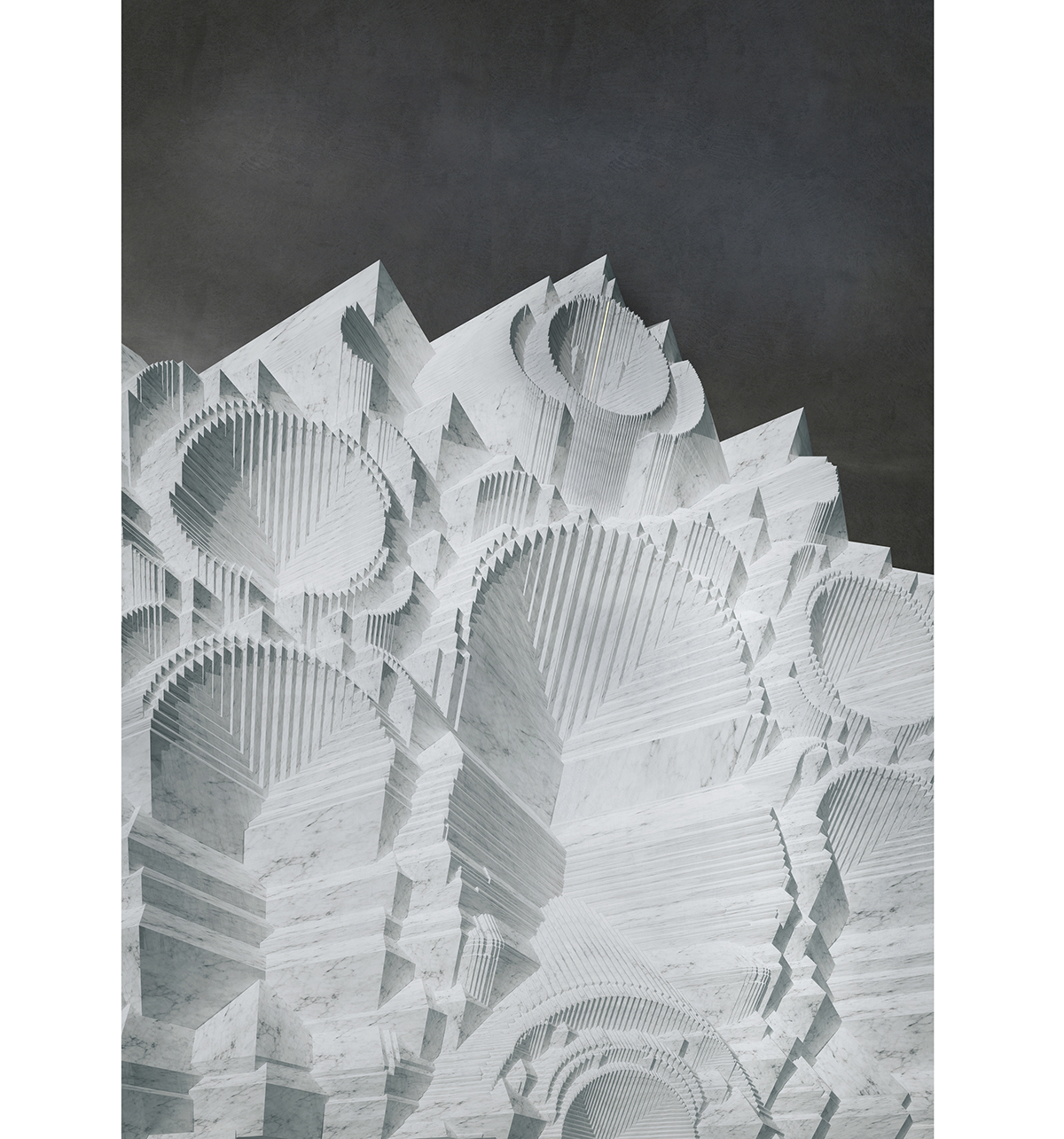
__________________________________________________________________________________________________
In further studies the developed typology has been applied to an urban scale.
The Atheistic Landscape, celebrating the growth of oak seedlings, is an investigation into an architecture of non-religious awe and perspective-giving capacity of scientific detailing, pushing visitor towards an awareness of the scale of nature and universe, creating a new type of ever-evolving open cathedral.
The Atheistic Landscape, celebrating the growth of oak seedlings, is an investigation into an architecture of non-religious awe and perspective-giving capacity of scientific detailing, pushing visitor towards an awareness of the scale of nature and universe, creating a new type of ever-evolving open cathedral.

In Catholicism a tabernacle is an ornamented box-like vessel for the exclusive reservation of the consecrated Eucharist,
in Hebrew tradition it relates to portable dwelling place of the devine presence.
in Hebrew tradition it relates to portable dwelling place of the devine presence.
The New Tabernaculum encapsulates young oak seedling and expands with it, angled sheets of gold and glass protect and illuminate the growth of the plant,
celebrating the beauty of nature and passing of time.
celebrating the beauty of nature and passing of time.
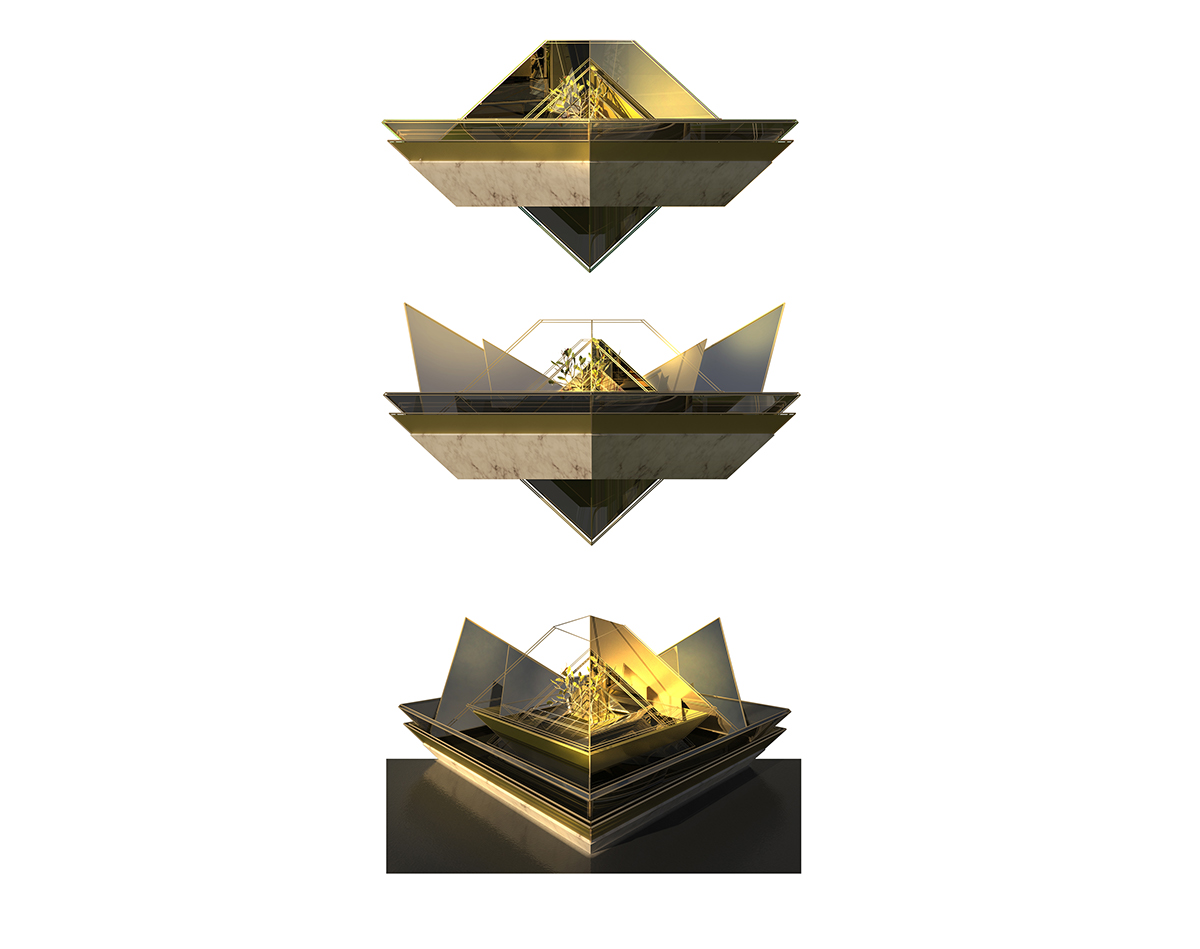
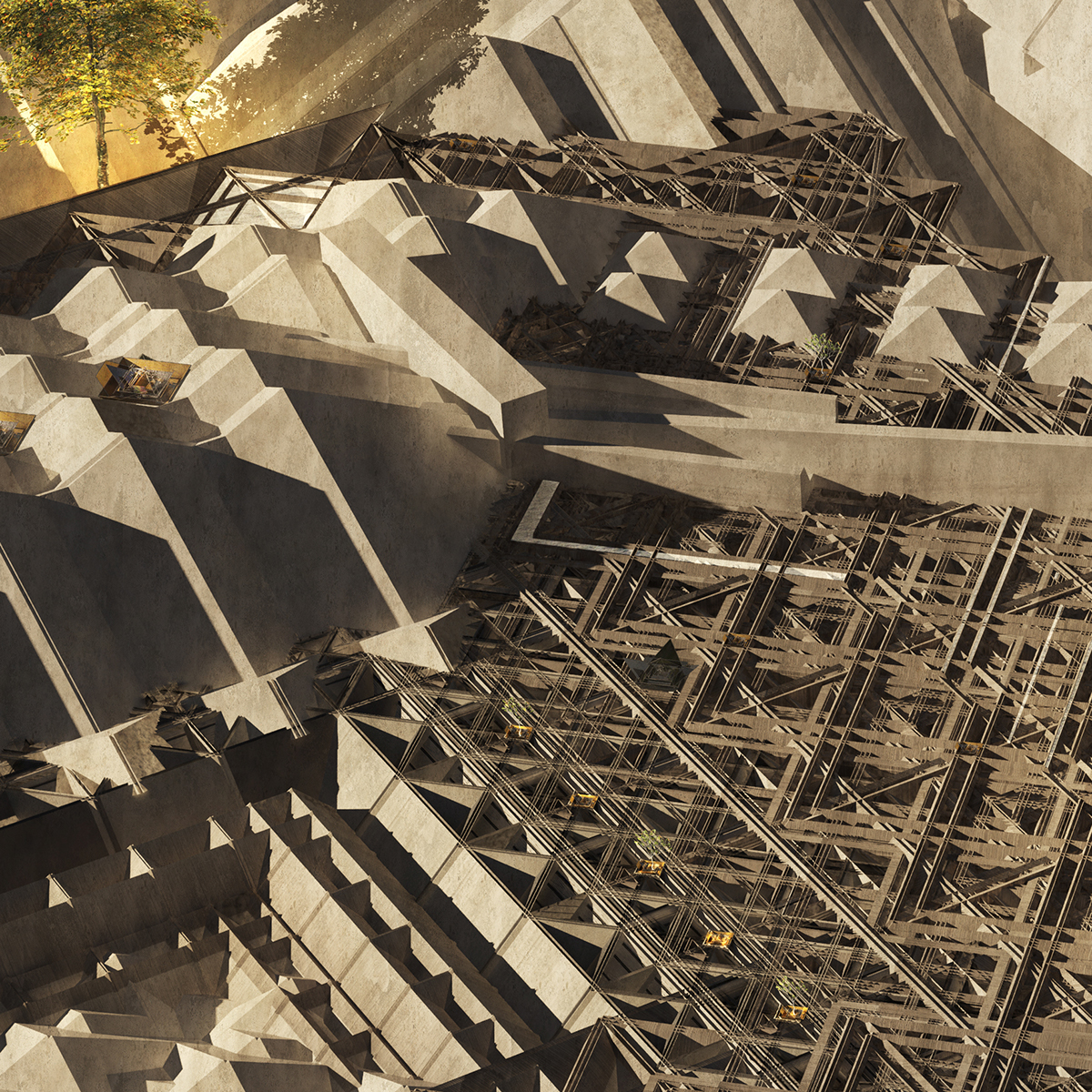
Fractal base provides for different expansion rates of the New Tabernacula and public spaces around them.
Older trees settle within and outside of designated spaces, with time recliming the architectural landscape back to nature.
The speed of growth, accumulation of the material, and passing of time influence the way of traveling through.
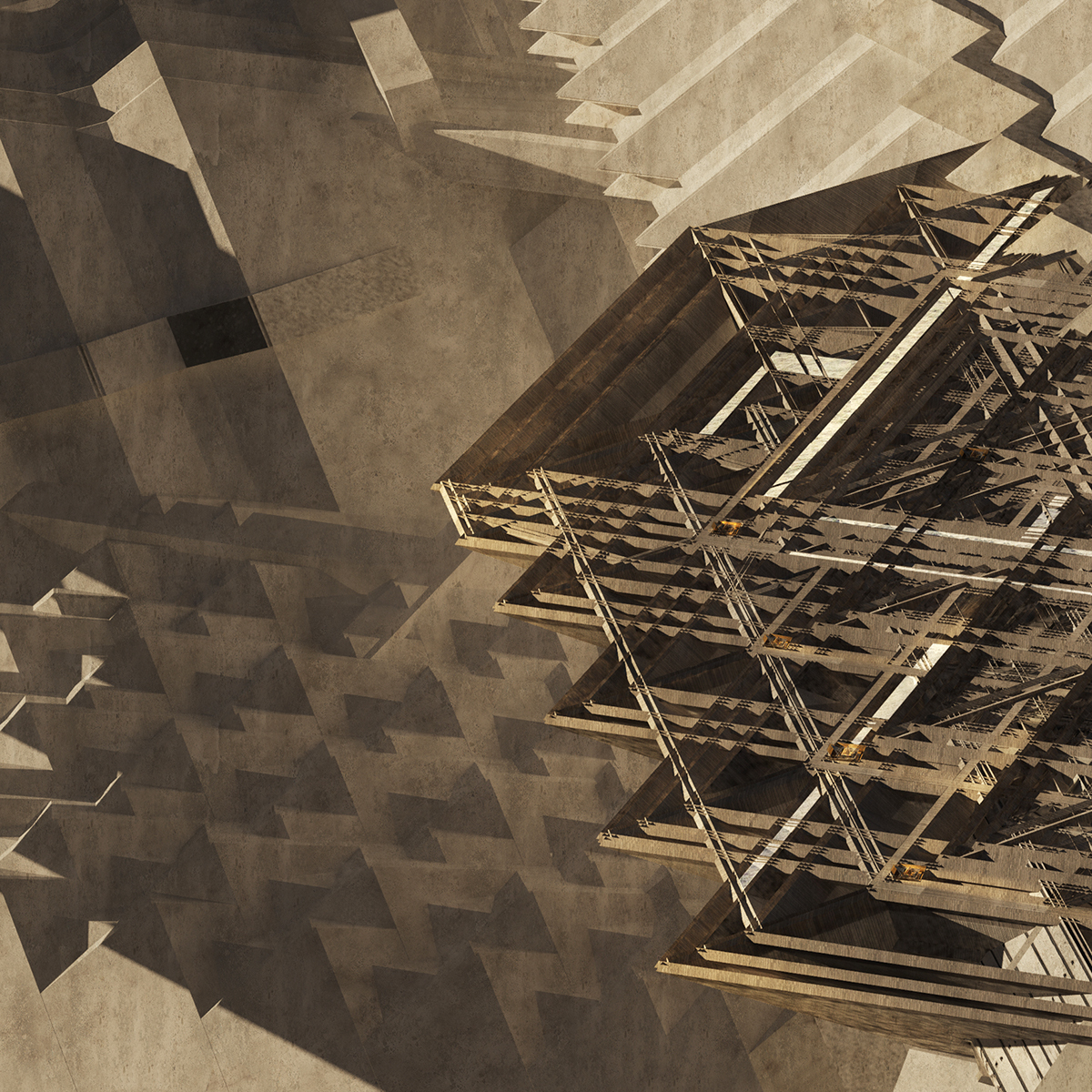

Golden Dome of Maturity illuminates only oldest of oak trees, creating a place of reflection and a moment of solitude.

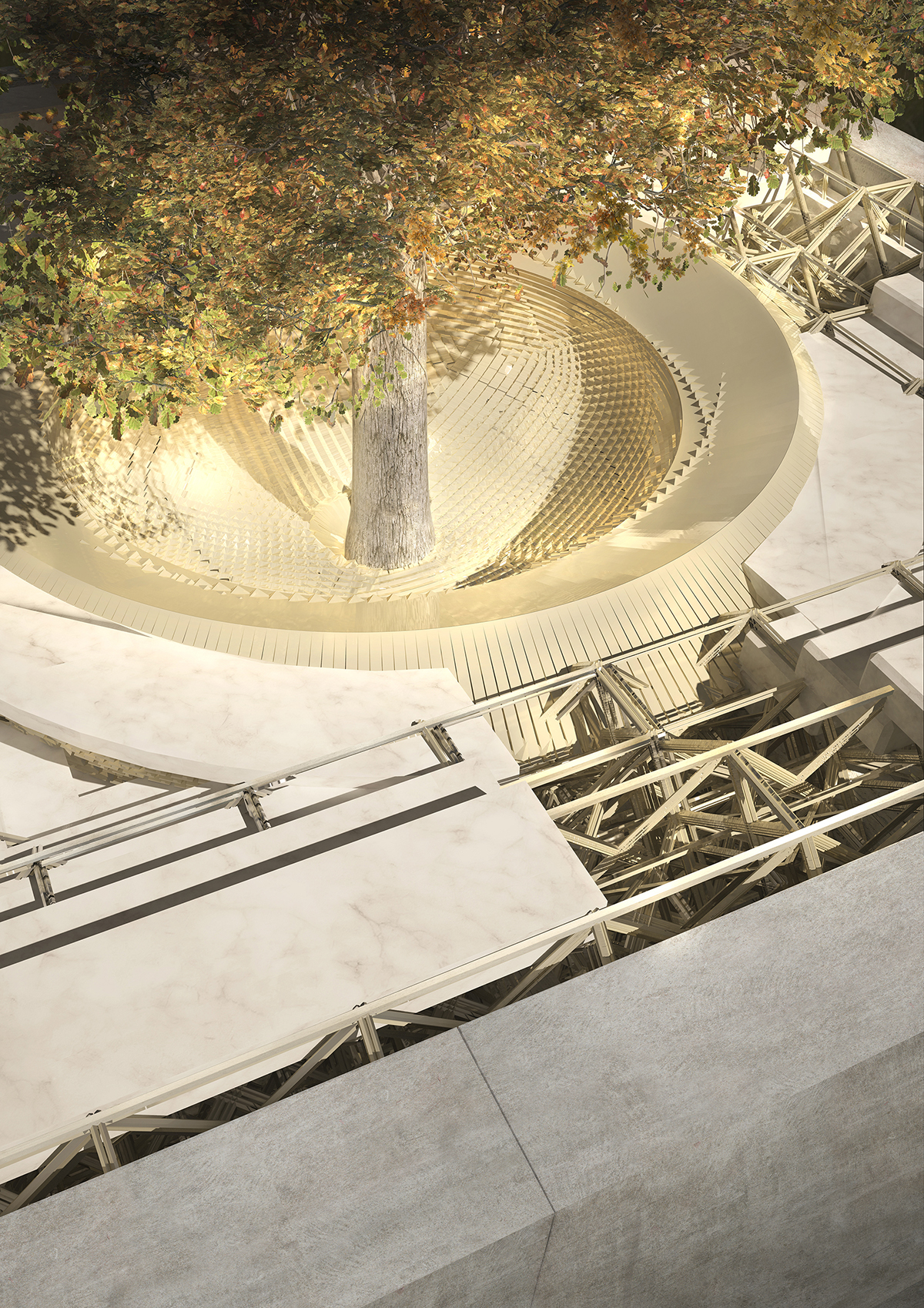

To be made to feel small is, to be sure, a painful daily reality of the human playground.
But to be made to feel small by something mighty and noble, accomplished and intelligent is to have wisdom presented to us along with a measure of delight.
We can survey ourselves as if from a distance, no longer offended by the wounds inflicted on our self-esteem,
feeling newly indifferent to our eventual fate, generous towards the universe and open-minded about its course.
Alain de Botton, Religion for Atheists
But to be made to feel small by something mighty and noble, accomplished and intelligent is to have wisdom presented to us along with a measure of delight.
We can survey ourselves as if from a distance, no longer offended by the wounds inflicted on our self-esteem,
feeling newly indifferent to our eventual fate, generous towards the universe and open-minded about its course.
Alain de Botton, Religion for Atheists
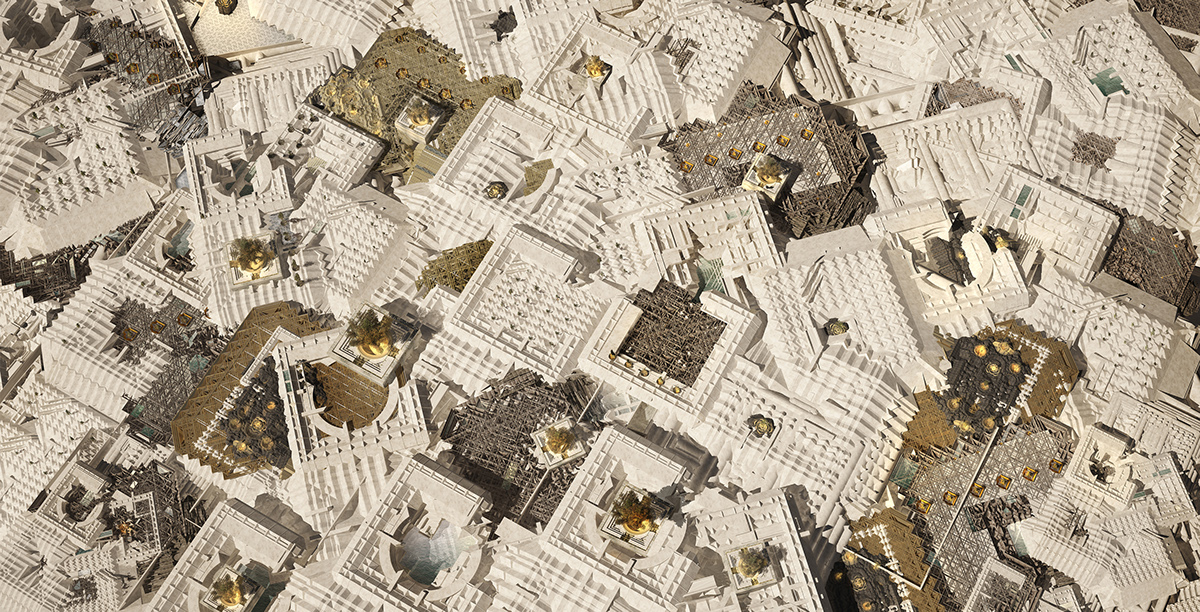
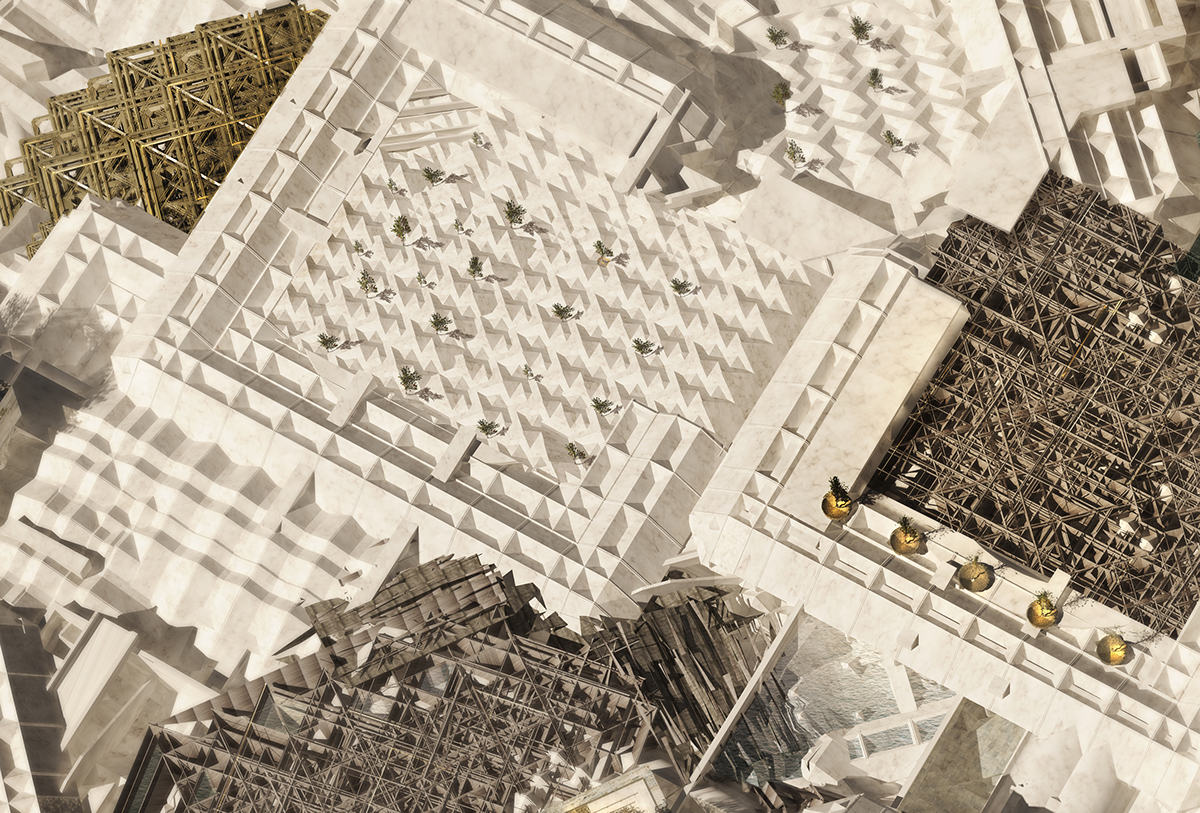
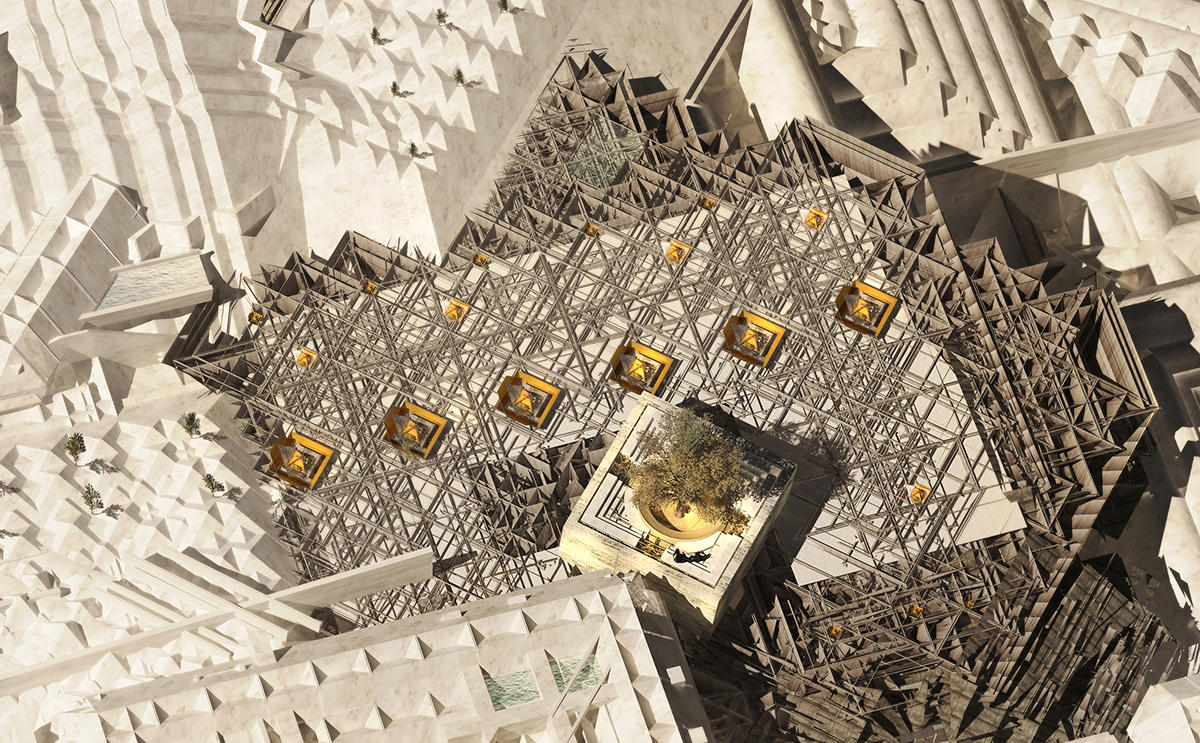

kacper.p.chm@gmail.com



